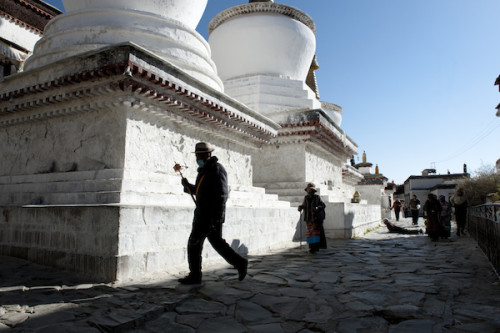A temple, shrine or monastery sits at the heart of almost every community on the Tibetan Plateau. Jo James steps inside to learn more…
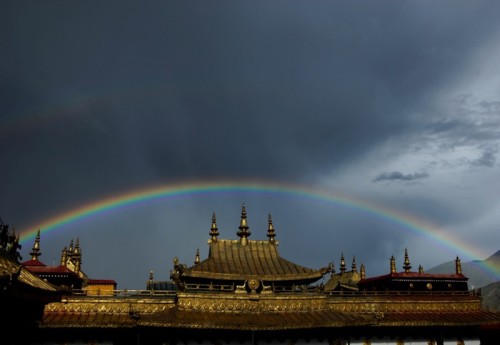 When you step out of the brilliant sunshine, past rows of creaking prayer wheels, and into a Tibetan temple, it takes your eyes a second to adjust. Slowly, elements emerge from the gloom: yak-butter lamps (or, occasionally, wavering electric lights) flicker from the altar, their light amplified by golden statues of Buddha and his bodhisattvas; a shaft of sunlight illuminates a loose-leaved prayer book left open on a low table; golden details gleam from the painted walls.
When you step out of the brilliant sunshine, past rows of creaking prayer wheels, and into a Tibetan temple, it takes your eyes a second to adjust. Slowly, elements emerge from the gloom: yak-butter lamps (or, occasionally, wavering electric lights) flicker from the altar, their light amplified by golden statues of Buddha and his bodhisattvas; a shaft of sunlight illuminates a loose-leaved prayer book left open on a low table; golden details gleam from the painted walls.
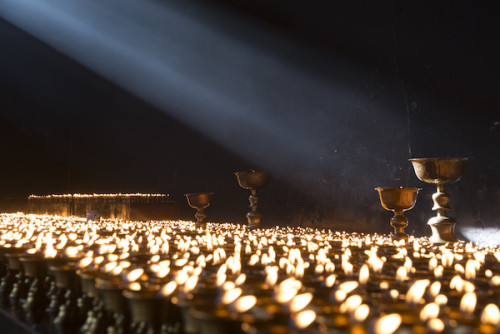 The exact scene will differ according to where and when you visit, but some themes are universal. The atmospheric lighting, gold-hued statuary and intricate wall paintings can be found in even the lowliest village shrine. In monasteries, low cushions sit in lines, awaiting prayer time. Almost everywhere, heaps of offerings – oranges, wrinkled apples and fistfuls of crumpled mao notes – cover the altars.
The exact scene will differ according to where and when you visit, but some themes are universal. The atmospheric lighting, gold-hued statuary and intricate wall paintings can be found in even the lowliest village shrine. In monasteries, low cushions sit in lines, awaiting prayer time. Almost everywhere, heaps of offerings – oranges, wrinkled apples and fistfuls of crumpled mao notes – cover the altars.
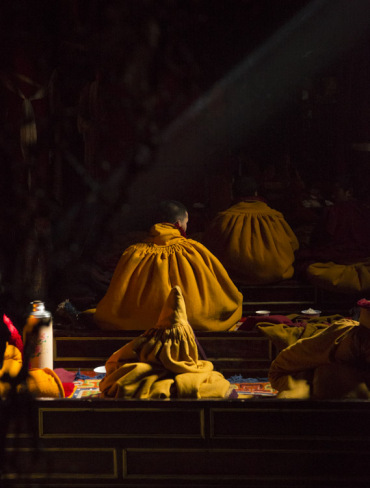 The sense that you have entered a different realm deepens as you take in your surroundings. During prayer times the room swells with deep-voiced chanting punctuated by drumbeat. The walls are often lined with statues of wrathful deities, some whose gaze is considered so terrible that they stand blindfolded, while others are depicted coupled with their consorts or stamping on prostrate bodies that represent sin and worldly delusion.
Tibetans believe that Buddhist temples ushered their country into existence. In the 7th century, Tibet’s great king Songtsen Gampo sought to construct a temple to Avalokiteshvara (Guanyin in Chinese or Chenresig in Tibetan) in his capital, Lhasa. No matter how well the walls were built, they collapsed each night. Songtsen Gampo’s Chinese wife, Princess Wencheng, divined that a demoness lay beneath the land, and that this raw and untamed energy was holding the country back. A series of thirteen temples were constructed to pin the demoness in place, the last and most important of which – the Jokhang in central Lhasa – stands above her heart.
The sense that you have entered a different realm deepens as you take in your surroundings. During prayer times the room swells with deep-voiced chanting punctuated by drumbeat. The walls are often lined with statues of wrathful deities, some whose gaze is considered so terrible that they stand blindfolded, while others are depicted coupled with their consorts or stamping on prostrate bodies that represent sin and worldly delusion.
Tibetans believe that Buddhist temples ushered their country into existence. In the 7th century, Tibet’s great king Songtsen Gampo sought to construct a temple to Avalokiteshvara (Guanyin in Chinese or Chenresig in Tibetan) in his capital, Lhasa. No matter how well the walls were built, they collapsed each night. Songtsen Gampo’s Chinese wife, Princess Wencheng, divined that a demoness lay beneath the land, and that this raw and untamed energy was holding the country back. A series of thirteen temples were constructed to pin the demoness in place, the last and most important of which – the Jokhang in central Lhasa – stands above her heart.
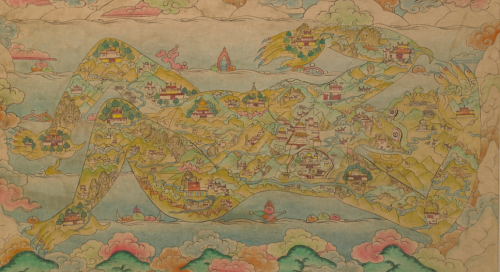 Still doing fine demoness-pinning work twelve and a half centuries later, the Jokhang is Tibetan Buddhism’s most sacred place. It is also one of the region’s few “proper” temples with no resident monks; Lhasa’s major monasteries staff it in rotation. In place of prayer times and chanting monks comes a stream of pilgrims moving through the Jokhang’s ancient chapels, patiently awaiting their opportunity to see Jowo Rinpoche, a priceless statue of Buddha and Tibet’s holiest relic.
Still doing fine demoness-pinning work twelve and a half centuries later, the Jokhang is Tibetan Buddhism’s most sacred place. It is also one of the region’s few “proper” temples with no resident monks; Lhasa’s major monasteries staff it in rotation. In place of prayer times and chanting monks comes a stream of pilgrims moving through the Jokhang’s ancient chapels, patiently awaiting their opportunity to see Jowo Rinpoche, a priceless statue of Buddha and Tibet’s holiest relic.
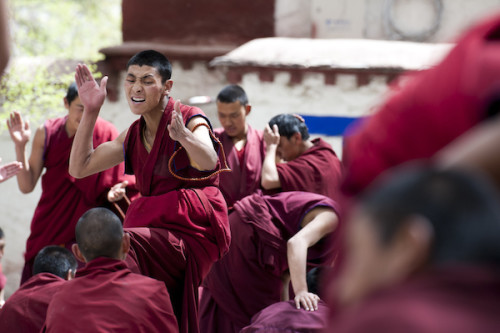 While the Jokhang may house the most fabulous statues, many other monasteries have their own specialties. Labrang Monastery in Gansu produces fantastic yak butter sculptures for the Tibetan New Year celebrations. Dege Monastery in Sichuan prints scriptures that are read across the Tibetan Plateau. Monks at Sera Monastery in Lhasa are heirs to a long tradition of dramatic doctrinal debate. Wall- and thangka-painting has reached its apotheosis in a modest monastery in Wutun, southeast Qinghai. Tantric drumming and esoteric pre-Buddhist rites linger at Nechung Monastery in Lhasa’s western suburbs.
While the Jokhang may house the most fabulous statues, many other monasteries have their own specialties. Labrang Monastery in Gansu produces fantastic yak butter sculptures for the Tibetan New Year celebrations. Dege Monastery in Sichuan prints scriptures that are read across the Tibetan Plateau. Monks at Sera Monastery in Lhasa are heirs to a long tradition of dramatic doctrinal debate. Wall- and thangka-painting has reached its apotheosis in a modest monastery in Wutun, southeast Qinghai. Tantric drumming and esoteric pre-Buddhist rites linger at Nechung Monastery in Lhasa’s western suburbs.
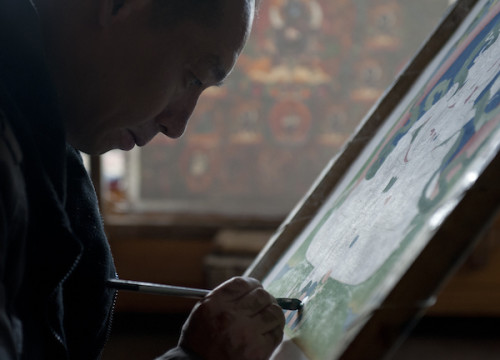 Whichever monastery or temple you visit, you will find a rich web of connections linking religious institutions and their local communities. Tibetans offer what they can – yak butter poured from greasy Thermoses for lamps, labour for building repairs, money – in order to support and maintain their monasteries.
It is this human factor that completes Tibet’s monasteries, making them vital, living repositories of Tibetan culture. Each houses a unique combination of art, history, skill and wisdom that each generation contributes to and augments, making these buildings and their contents the beating hearts of Tibet.
Whichever monastery or temple you visit, you will find a rich web of connections linking religious institutions and their local communities. Tibetans offer what they can – yak butter poured from greasy Thermoses for lamps, labour for building repairs, money – in order to support and maintain their monasteries.
It is this human factor that completes Tibet’s monasteries, making them vital, living repositories of Tibetan culture. Each houses a unique combination of art, history, skill and wisdom that each generation contributes to and augments, making these buildings and their contents the beating hearts of Tibet.
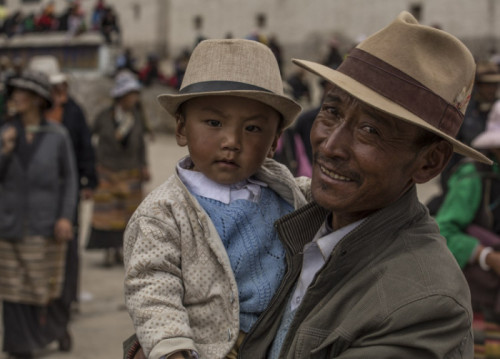 Warm wishes and happy travels,
Warm wishes and happy travels,

See the Jokhang and more on our Tibetan journeys
Experience Lhasa and the exciting drive to Everest on Roads on the Roof of the World (10 days)
Join our epic journey from Luang Prabang to Lhasa on Lands of Silk and Snow (16 days)
Travel across photogenic Tibet with your camera on our photographic journey Tibet through a Lens (12 days)
